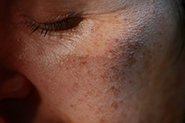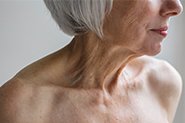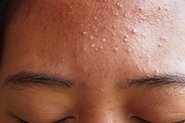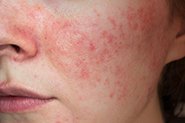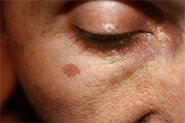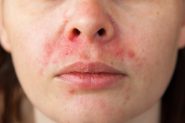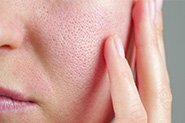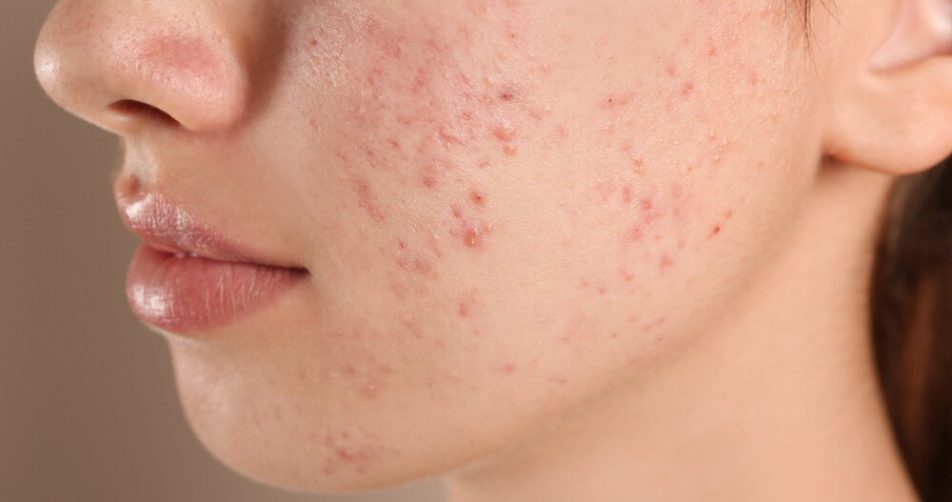
What does ‘non-comedogenic’ mean?
A ‘comedo’ is the scientific name for a blocked pore or blackhead. So ‘non-comedogenic’ suggests that a product or ingredient won’t block pores. And because a blocked pore is the first step to a pimple forming, if we can avoid the pore blocking step, then we can prevent pimples forming! It sounds simple in theory, but let’s explore further…
How is comedogenicity tested in the lab?
Until recently, the Rabbit Ear Test (RET) was used to determine a product’s comedogenicity rating (on a scale from 0-5, with 5 being most likely to block pores and therefore cause pimples/acne). The theory is that you put the product inside a rabbit’s ear and if it causes a blackhead then it will do the same in humans.
But rabbit skin isn’t the same as human skin, so companies moved to using human subjects to test for comedogenicity. The test ingredient is placed on the skin of a person’s upper back for 48-72 hours, multiple times over 4 weeks. A similar rating scale to the RET is used to determine a product’s potential to cause comedones.
The idea is sound – if a product is high on the comedogenicity scale (rating 4-5), it will cause blocked pores and pimples, and vice-versa.
So is non-comedogenic skincare even a thing?
It’s a great idea in theory, but unfortunately there are a few issues with comedogenicity testing that don’t translate into real-life:
Back skin isn’t facial skin – just because test subjects get comedones on their back, doesn’t mean the same will happen on the face, which has a completely different number and distribution of sebaceous glands.
There isn’t agreement about the comedogenicity of the same ingredient in different tests (some low-grade comedogenic ingredients still caused acne in some test subjects, and vice versa). Some of this is because it costs money, and takes time, to perform these tests on the huge number of people that would be required to get an accurate result – so only a small sample size is studied in the short term (sometimes only 30 people).
Like most skincare research, comedogenicity testing isn’t typically performed on skin of different colours and ethnicities, so factors like differences in pore size aren’t taken into account.
Error can also arise because an ingredient can be comedogenic in its pure form, but not when it is included as part of an cosmetic product’s overall formulation. As tempting as it is, you can’t just reduce the acne-causing potential of a product down to its individual ingredients – cosmetic formulation science is way more complex than that, and the ingredients exist in synergy with each other.
The testing process does not mimic how products are used in everyday life so even if something is comedogenic in the test, it may not be when used in a real life situation. Testing protocols often differ between labs too.
The term ‘non-comedogenic’ and comedogenicity rating scale is not regulated by any governing body, so it can mean anything and is therefore essentially meaningless!
And finally, none of this takes into account the other factors at play in acne-prone skin – this can absolutely have an impact on whether something is comedogenic or not.
Together, this makes the ‘non-comedogenic’ label on skincare products, and those online ‘comedogenicity checker’ tools, not as simple and straightforward as they seem. For most people, it is still a process of trial and error.
But there’s good news for retinoid users!
When you’re using a prescription retinoid in your skincare routine (whether it’s for acne or anti-aging) you are actively treating the factors that lead to blocked pores. So you can relax about the comedogenicity or otherwise of your skincare products – especially moisturisers and sunscreen. In fact, one of the best ways to help your skin tolerate a retinoid in the early stages is with a rich moisturiser – something you may have avoided in the past.
And by letting your prescription ingredients do all the heavy lifting, you can leave out those multiple layers of other serums and creams that are more likely to block pores than a single ingredient or product!
For a detailed look at how pimples form (and what you can do about them!) CLICK HERE
REFERENCES
Boozalis E, Patel S. 2018. Clinical utility of marketing terms used for over-the-counter dermatologic products. J Dermatolog Treat. 29(8):841-845.
Weiss C, Caswell M. 2017. Non-comedogenic and non-acnegenic claim substantiation. J Cosmet Sci. 68(4):253-256.
Draelos ZD, DiNardo JC. 2006. A re-evaluation of the comedogenicity concept. J Am Acad Dermatol. 54(3):507-12.
Mirshahpanah P, Maibach HI. 2007. Models in acnegenesis. Cutan Ocul Toxicol. 26(3):195-202
READY TO GET STARTED WITH ACNE TREATMENT?
CLICK HERE TO BOOK A CONSULT WITH OUR EXPERIENCED MEDICAL TEAM.


